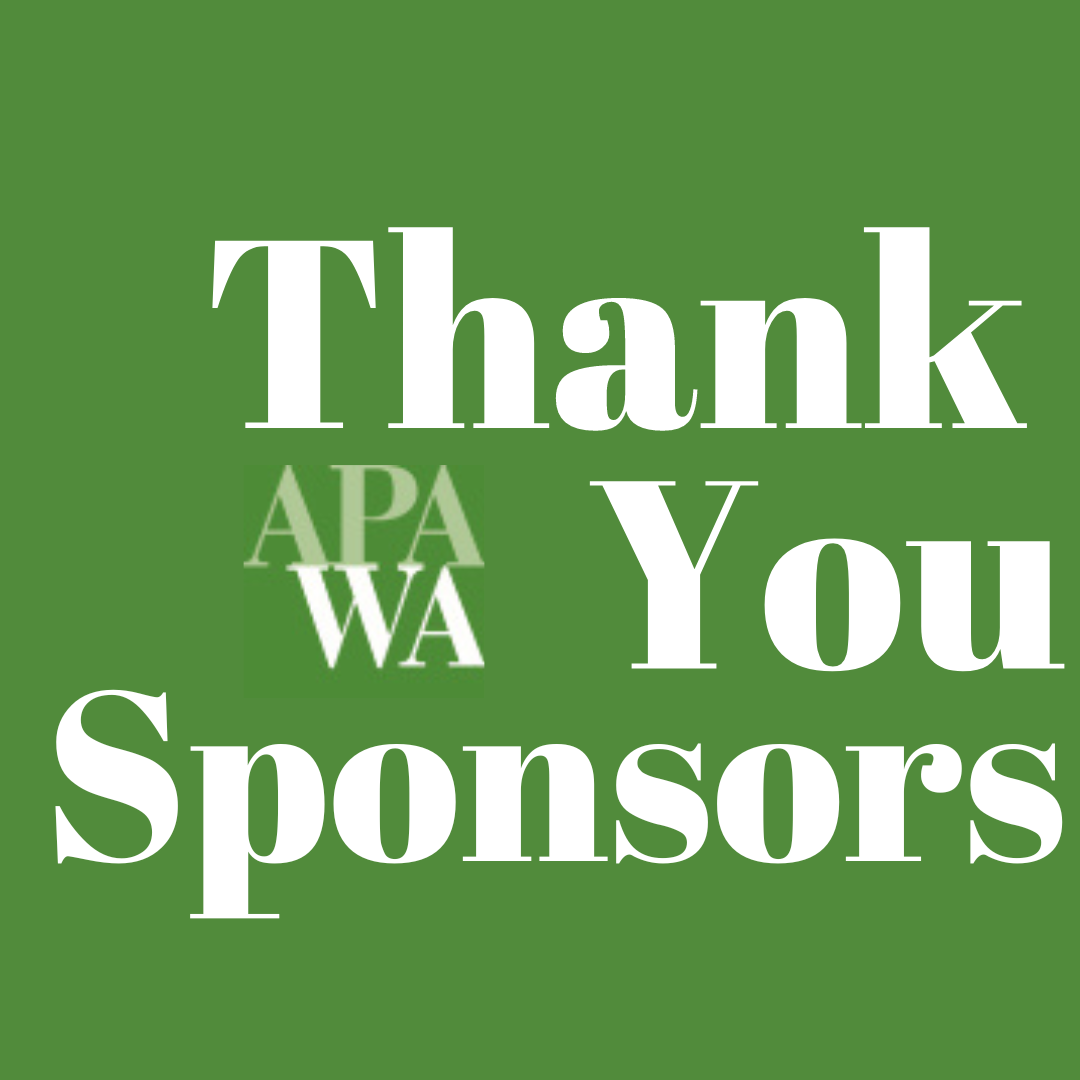- About Us
- Events & Training
- Professional Development
- Sponsorship
- Get Involved
- Resources
Sustainable Washington5. Conclusions“The significant problems we have cannot be solved at the same level of thinking with which we created them.” — Albert Einstein APA Washington Actions and CommitmentsFrom the national to the local level, the American Planning Association and its members are committed to action on climate change and sustainability issues. In Chapter 1, we provided an overview of the extensive policy guides developed by the American Planning Association at the national level over the past decade. Similarly, APA Washington has also provided guidelines for planners on growth management and livability through Livable Washington: APA's Action Agenda for Growth Management and Livable Washington: Update 2005. With the Board’s adoption of this latest project - Sustainable Washington 2009: Planning for Climate Change - APA Washington is taking another step forward to address critical planning issues and support quality planning in Washington State. Sustainable Washington 2009 includes a broad spectrum of informational materials that can serve as ongoing resources for planners in our state. The centerpiece of this effort is the primary text (this document), which is posted on the Chapter website and available to APA members throughout the state. Explain the basic concepts of sustainability and climate change; Highlight predicted climate change impacts in Washington; Introduce planners to the need for planning that responds to climate uncertainty with a flexible, holistic, and long-term approach; Describe specific actions that planners can take in local, regional, and state jurisdictions to mitigate climate change by reducing greenhouse gas emissions and to adapt to the effects of climate change; and Define how planners can use existing planning tools, particularly GMA, to address these challenges. This centerpiece document is designed to grow and evolve through updated hotlinks to provide examples of successful actions and a wide range of internet resources for planners to use in working toward a sustainable future. This first Sustainable Washington effort has also generated four other resources for planners: A printed 8-page Executive Summary, designed to inform planners about the web-based materials and to encourage allied professionals, legislators, elected officials, and the public to join us in this effort. An open-architecture web-based set of Planners’ Stories, describing the successes and challenges encountered by local jurisdictions in developing climate action plans and sustainability strategies. The Planner’s stories are created in a wiki format to allow local planners to add their own accounts and to update existing listings as new efforts get underway. The 2008 Survey of Planners, including the responses of over 500 planners in Washington and their efforts toward addressing climate change and sustainability issues. The 2009 Sustainability Policy Sampler, includes example policies from local comprehensive plans and other documents from cities around the state. The APA Washington Board is committed to following up on the recommendations of Sustainable Washington through its legislative agenda. The Chapter’s active and extensive Legislative Committee: Reviews proposed bills and develops APA positions on legislation important to planners; Develops chapter legislative policy positions for adoption by the Board; Successfully co-sponsored important new legislation that passed in 2008, EHB 1967 ; and Action by the Legislative Committee is one of the primary ways that the Chapter can support the recommended actions identified in this document. The Chapter is committed to an outreach effort to connect with regional and state planning entities, allied professions, and relevant non-profit organizations to share the information included in Sustainable Washington. Additionally, we know that both the science of climate change and the range and effectiveness of responses will advance. The Chapter commits to future editions of Sustainable Washington and/or updates to the Chapter website as a means to capture those advances and to ensure that the website remains a useful and effective resource for planners in our state. Call to ActionWe hope that this information suite is not only useful to planners in their day-to-day work, but that it also inspires them to include climate change issues in their long-term planning efforts. In particular, the next round of GMA comprehensive plan updates is coming soon for many jurisdictions. We believe it is essential that the challenges of climate change be considered in every comprehensive plan update and implementing regulations. As we engage in this call to action, we remind planners of the principles underlying this effort:
Climate change is no longer a speculation by scientists looking to predict the future with limited evidence. It has now been modeled extensively under a wide range of scenarios, tested, peer-reviewed, and accepted by thousands of scientists worldwide. To our great concern, the largest uncertainty is not whether it will occur, but how quickly it will come and how much our actions can slow or reduce its impact. Climate change is a unique and unprecedented challenge. It is one that planners cannot solve alone, but neither can it be solved by any single profession, practice, invention, or innovation. It will take the combined efforts and the combined expertise of many planners, architects, engineers, inventors, investors, politicians, scientists and citizens to make a real and lasting difference. Planners, by virtue of their holistic, long-term, and integrative approach, must take a leadership role in developing and implementing lasting solutions. We need our planners not just to plan, but to lead. There is no time left to wait for others in this effort. The time to act is now. 1 EHB 1967 - [C 342 L 09] – Prohibiting expansion of UGAs into a 100-year floodplain. Restricts a county or city from expanding an urban growth area into a 100-year floodplain of a river (in Western Washington) with an annual flow of 1,000 or more cubic feet per second, with certain exceptions. |

